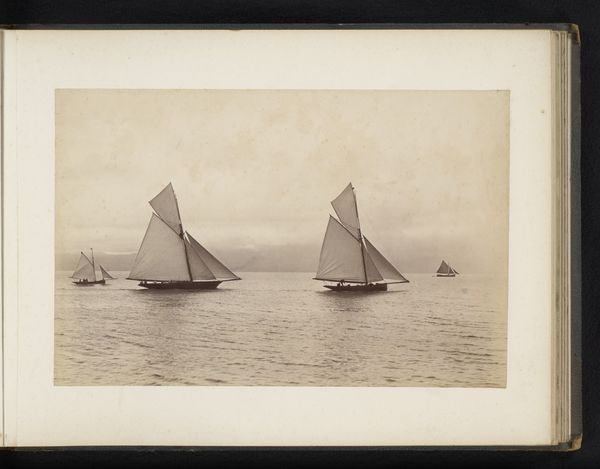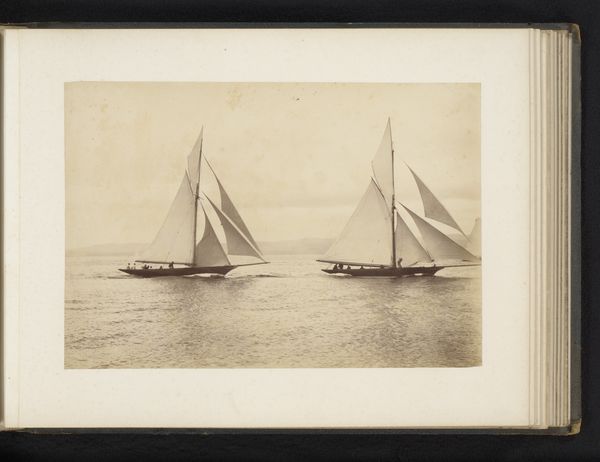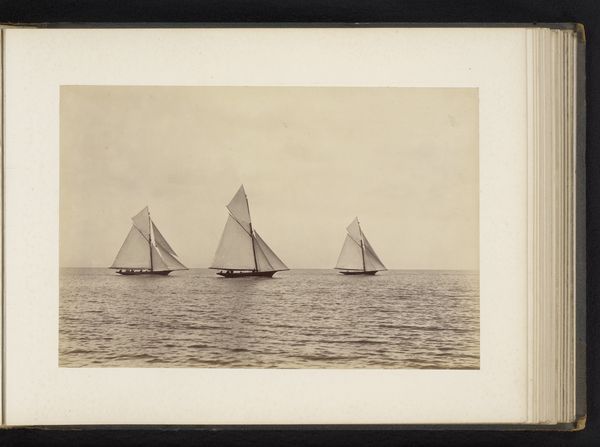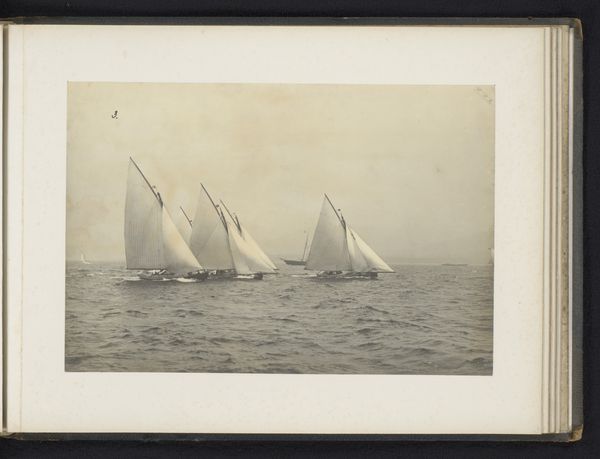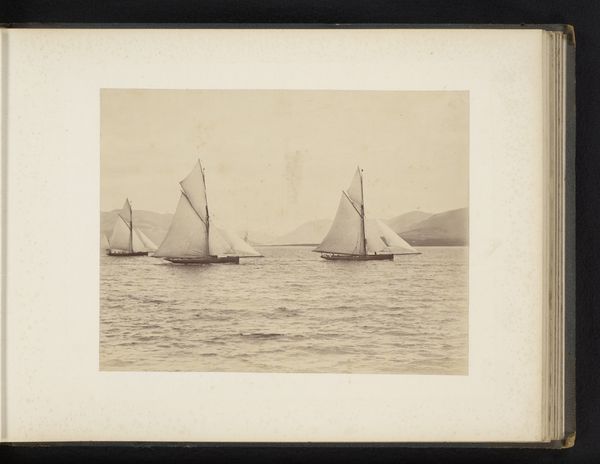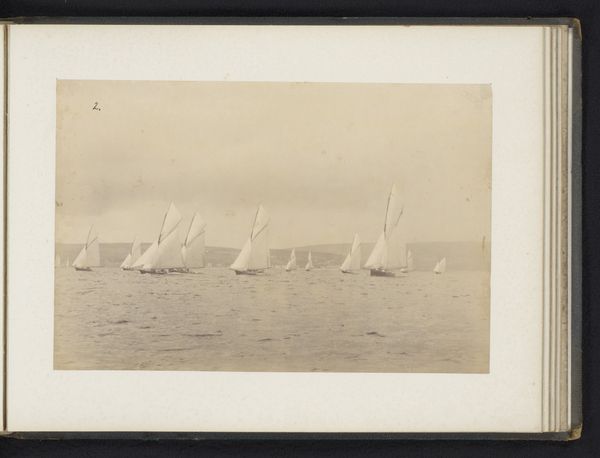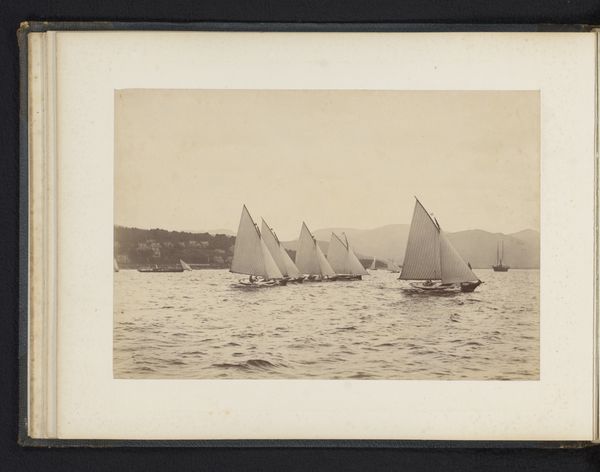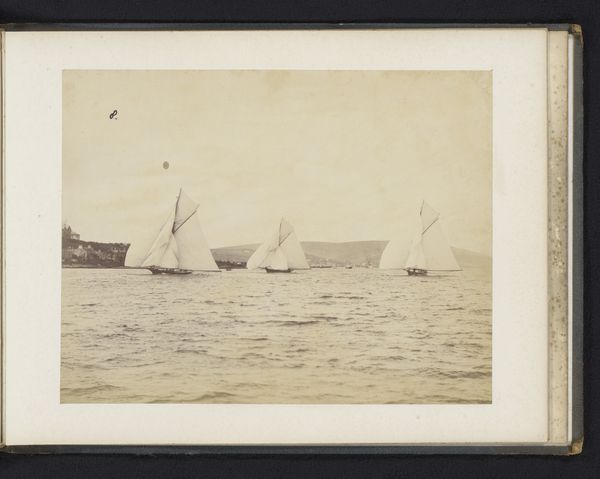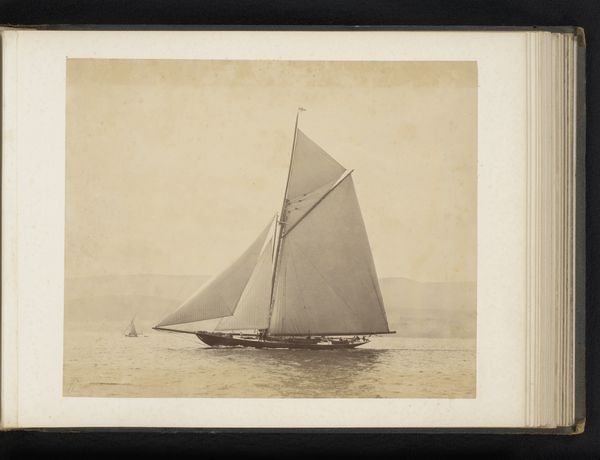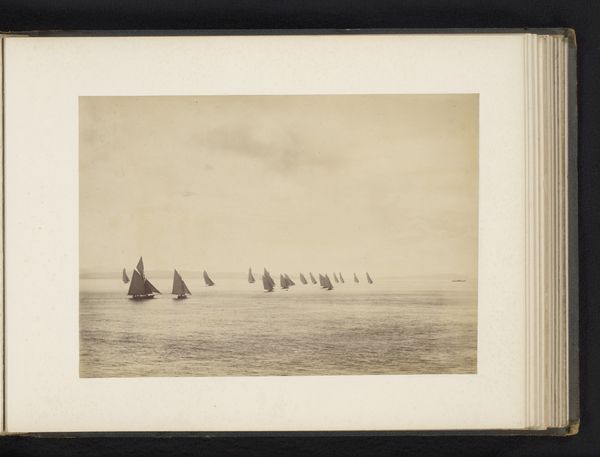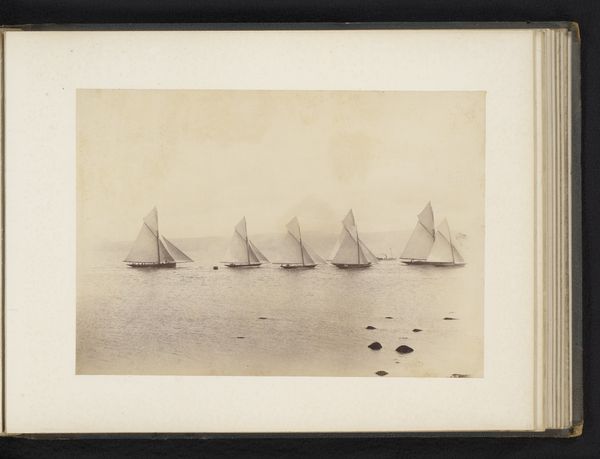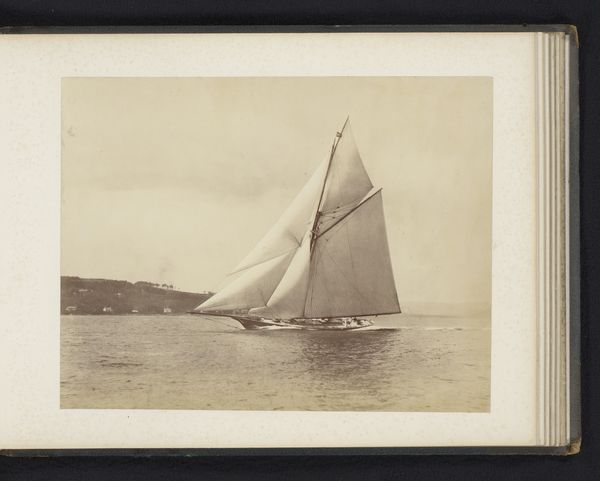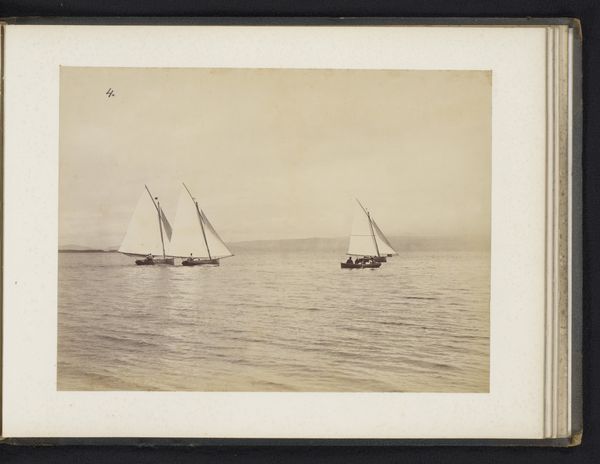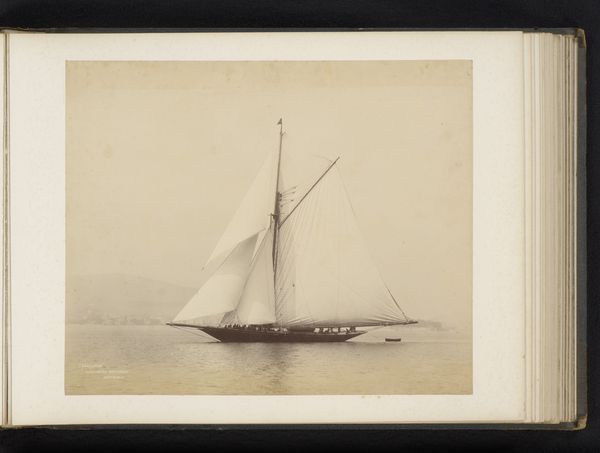
Verschillende zeilschepen, waaronder Woodcock en Yvonne, te water met op de achtergrond een heuvelachtig landschap c. 1880 - 1900
0:00
0:00
photography, gelatin-silver-print
#
photo of handprinted image
#
still-life-photography
#
landscape
#
photography
#
gelatin-silver-print
#
realism
Dimensions: height 191 mm, width 283 mm
Copyright: Rijks Museum: Open Domain
Editor: This is "Verschillende zeilschepen, waaronder Woodcock en Yvonne, te water met op de achtergrond een heuvelachtig landschap", a gelatin silver print dating from around 1880 to 1900. The sailboats have such sharp, crisp lines contrasting with the soft, almost dreamlike quality of the water and distant hills. What captures your attention most about this scene? Curator: What strikes me is the context. By the late 19th century, leisure and recreation became increasingly visible in photographic art. Photography served as a new medium to popularize these leisure activities and integrate them into the cultural narrative, constructing specific images of bourgeois lifestyle and associating them with a visual record for future consumption and distribution through photo albums. Do you think the sailboats are being photographed as recreation, or is something else suggested in this piece? Editor: I think it's about capturing leisure. You can almost feel the gentle breeze. Were these photographs displayed publicly or primarily kept in personal collections? Curator: That's a very important distinction. Early photography occupied an ambiguous space. While art exhibitions were emerging, the widespread access came through albums and postcards. These allowed individuals to curate their own collections of the world. This access also opened possibilities for manipulating personal or group identity. In this photo, the act of capturing those specific boats elevates them. Editor: It's interesting to think about how the medium itself played a role in shaping cultural values. So photography wasn’t just recording reality, but constructing it too? Curator: Precisely! This photo demonstrates how leisure was idealized. This medium created a lasting record accessible for viewing again and again. What do you take away from understanding its purpose? Editor: I realize how easy it is to take photography for granted now. It is fascinating how a simple image could then be a powerful tool in constructing collective memory and social standing. Thank you! Curator: It shows how photographs act as a window into both a specific moment and the broader cultural forces that shaped it.
Comments
No comments
Be the first to comment and join the conversation on the ultimate creative platform.
